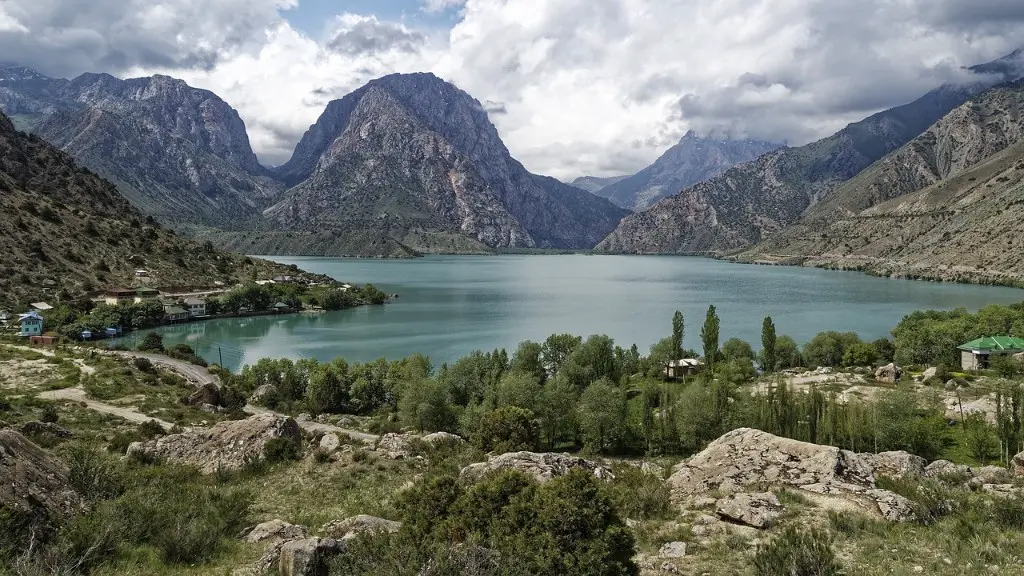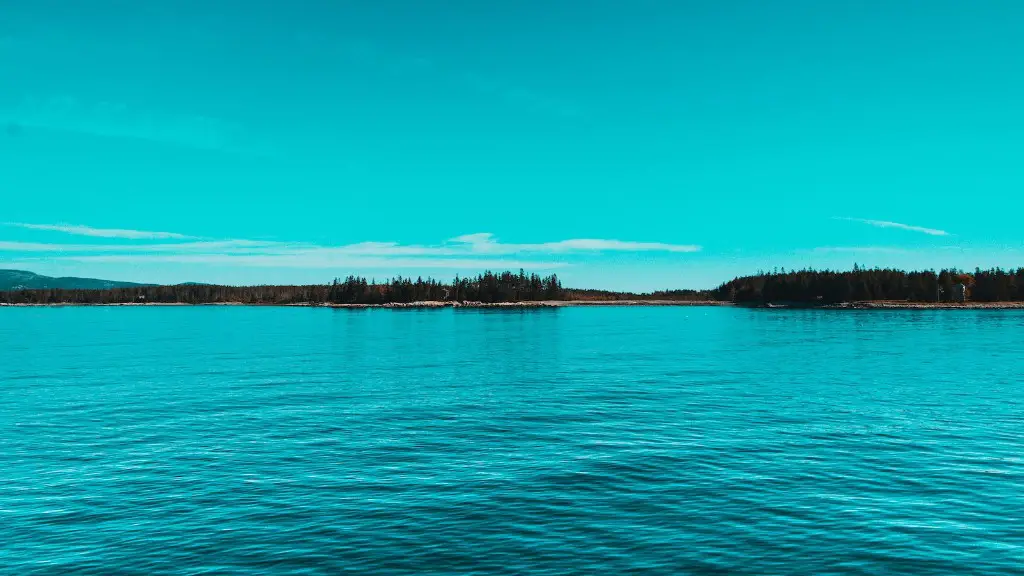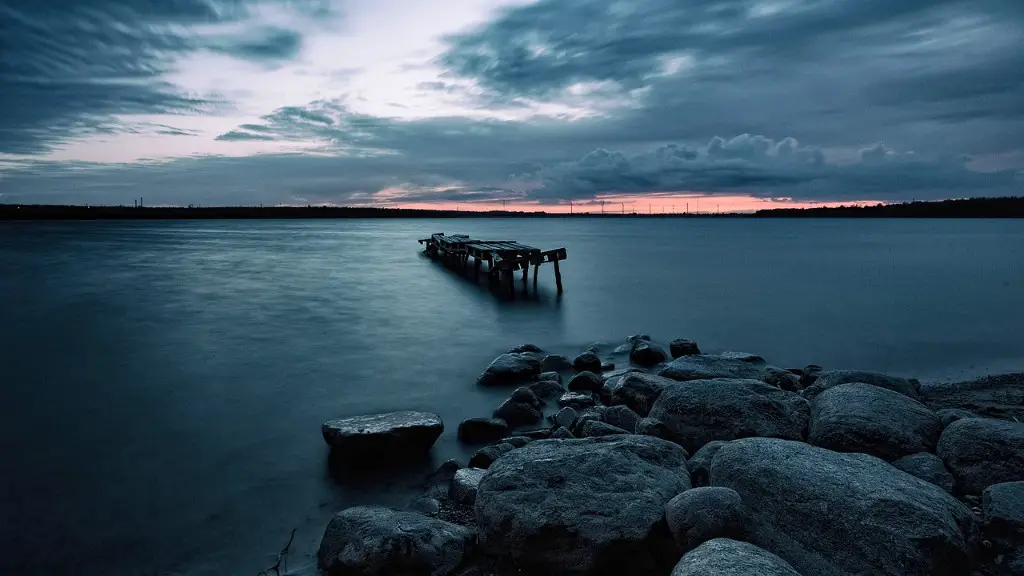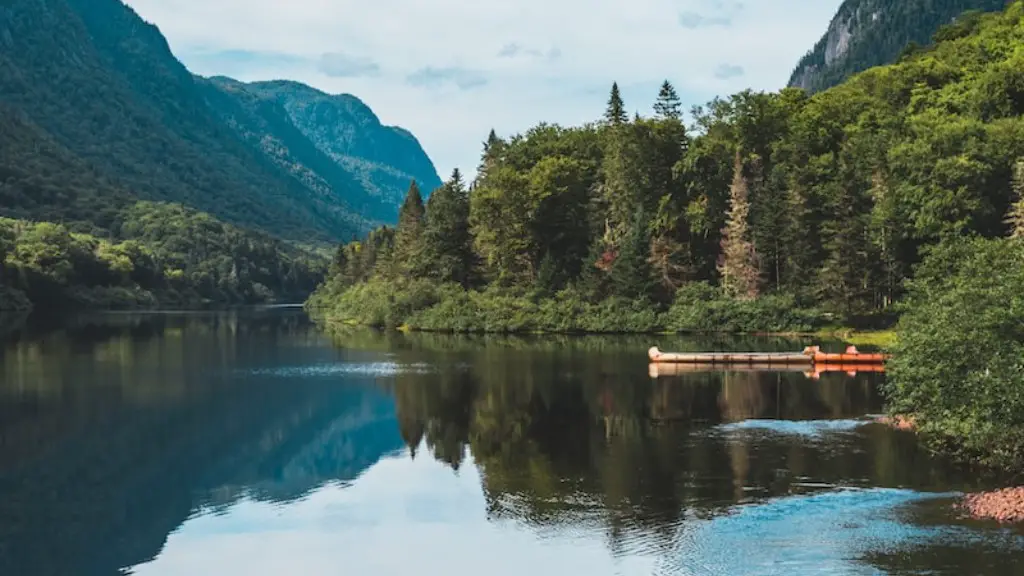Are The Boats Used In Lake Titicaca Made Of Metal?
The waters around Lake Titicaca, located in the upper reaches of the Andes mountains, were once the home of several ancient civilizations. From the Inca, Quechua and Aymara people to more modern-day inhabitants, the lake has seen many different ways of life and served as an important source of food, supplies and transport for centuries. Among the boats used by the people of Lake Titicaca are a special type of vessel known as the Titicaca balsa, which was built traditionally with wood and reed, and was used to cross the waters of the lake. But today, these traditional vessels have been replaced in some places of the lake by large motorboats made of metal.
The Titicaca balsa is an ancient fishing boat that uses the reeds that grow in abundance around the lake as its main component. These boats are lightweight, simple to construct and easy to transport, with the reeds providing buoyancy and the wood serving as a frame. The Titicaca balsa has been used for centuries as a means of transport for both people and goods across the lake, and is still seen today as a symbol of the lake’s rich culture.
Since the introduction of modern motorboats to the lake, the use of the Titicaca balsa has become less common. Many of these boats are made of metal, which has several advantages compared to wooden boats. Metal boats are much stronger and less vulnerable to damage from waves and wind, making them more suitable for crossing large distances on the lake. They are also much faster and more powerful than the wooden versions and can carry much larger loads. Additionally, they require less maintenance and can be used for longer periods of time.
Despite the superiority of metal boats over traditional wooden vessels, there are still many people who choose to use the Titicaca balsa. For one, the cost of building a metal boat is much higher than that of a wooden version, making it out of reach for many people on the lake. Additionally, the Titicaca balsa is still seen as a symbol of the beauty and history of the lake, and many people find great joy in building and sailing these boats. For many, the experience of travelling in a traditional reedboat is an integral part of visiting the lake and a great source of pride for its inhabitants.
However, the Titicaca balsa does not just face competition from modern metal boats. There are also competing types of boats built from other materials such as plastic, fiberglass and more recently, composites. These boats offer a cheaper alternative to metal boats and are becoming increasingly popular on the lake. These boats are not as fast or powerful as metal boats, but are often still suitable for travelling across the lake.
It is clear that the Titicaca balsa has faced competition from modern motorboats made of metal and other materials, but it is still in use today. The Titicaca balsa offers a unique experience to those who visit Lake Titicaca, and it remains an important symbol of the lake’s history and culture. As the lake continues to face the challenges of modernisation, it is important to remember the traditional vessels that have been used on the lake for centuries.
Environmental Impact
The introduction of motorboats made of metal to Lake Titicaca has come with both positive and negative impacts. On the one hand, these boats are capable of travelling larger distances in a much shorter time, making them ideal for fishing and taking goods across the lake. On the other hand, the increased use of these boats has had a negative effect on the environment of the lake. Metal boats are much heavier than Titicaca balsa boats and require more fuel, resulting in higher levels of pollution in the lake. Additionally, increased commercial activity on the lake has caused disruptions to the local ecosystem and destroyed the habitats of many native fish and bird species.
In response to the growing environmental concerns, the government of Peru has taken steps to limit the use of motorboats on the lake in order to reduce pollution and destruction of native habitats. In recent years they have implemented a boat registration system, increased environmental policing and provided subsidies to fishermen who use traditional wooden boats. However, it is still very common to see motorboats made of metal on the lake, and much more needs to be done in order to protect the fragile ecosystem of the area.
Economic Impact
The introduction of motorboats made of metal on Lake Titicaca has had a significant impact on the local economy. On the one hand, the increased use of these vessels has allowed for greater economic growth and opportunities for locals to earn income. As local populations become more reliant on the lake for their livelihoods, the demand for fuel and supplies for these boats has increased, resulting in increased economic activity around the lake. Additionally, the increased speed and capacity of metal boats has allowed for a larger number of passengers and goods to be transported across the lake.
At the same time, local fishermen and boat builders have seen their incomes decrease due to the increased competition from metal boats. Traditional wooden boats take much longer to build and maintain, and many fishermen find it difficult to compete with the speed and efficiency of metal boats. Additionally, metal boats are much more expensive to construct and maintain, making it difficult for local people to afford them.
In response to these issues, many local communities have taken steps to preserve their traditional wooden boats. Boat building competitions and traditional boat rides are now common sights on the lake, and people are beginning to appreciate the uniqueness and beauty of the traditional Titicaca balsa boats. Additionally, several organisations around the lake offer subsidies and loans to local boat builders in order to support the preservation of these vessels.
Social Impact
The introduction of motorboats made of metal to Lake Titicaca has had a profound impact on the social life of the lake’s inhabitants. On the one hand, these vessels have allowed the lake’s population to travel greater distances in a much shorter time, leading to greater access to education, health care and other services that were formerly out of reach. Additionally, they have provided locals with improved access to food, supplies and other goods.
At the same time, the increased use of motorboats has had a negative effect on some aspects of the lake’s social life. The increased speed and efficiency of these vessels has reduced the amount of time that local people spend together, leading to a decrease in social contact and relationships. Additionally, the increased demand for fuel and supplies has caused prices to rise, leaving many people in the area struggling to make ends meet.
In order to address these issues, local communities have taken steps to preserve their traditional wooden boats. Boat building competitions and traditional boat rides are now common sights on the lake, and people are beginning to appreciate the uniqueness and beauty of the traditional Titicaca balsa boats. Additionally, the introduction of environmental education and fishing regulations has resulted in greater awareness of the need to protect the lake’s habitats.
Cultural Impact
The introduction of motorboats made of metal to Lake Titicaca has had an impact on the local culture and traditions of the area. On the one hand, these vessels have allowed the lake’s inhabitants to travel greater distances in a much shorter time, resulting in increased contact with other cultures and peoples. This has allowed for the exchange of ideas and customs, resulting in a more diverse cultural landscape around the lake.
At the same time, the increased use of metal boats has had a negative impact on some aspects of the local culture. The increased levels of noise from the engines and their speed have disrupted traditional celebrations and ceremonies that relied on calm waters. Additionally, the use of metal vessels has caused the Titicaca balsa to become less common, leading to a decrease in the traditional crafts that surround its construction. This has resulted in a loss of cultural pride for many of the lake’s inhabitants.
In order to address these issues, local communities have taken steps to preserve their traditional wooden boats. Boat building competitions and traditional boat rides are now common sights on the lake, and people are beginning to appreciate the uniqueness and beauty of the traditional Titicaca balsa boats. Additionally, the focus on preserving the lake’s ecology has resulted in a renewed appreciation of its natural beauty and cultural heritage.
Conclusion
The introduction of metal motorboats to Lake Titicaca has had a major impact on the lake’s inhabitants, both positively and negatively. These vessels have allowed for greater economic and social opportunities around the lake, while also bringing with them environmental and cultural challenges. While metal boats remain the dominant type of vessel on the lake, the traditional Titicaca balsa still plays an important role in the lake’s culture and is a symbol of the lake’s history and beauty. It is important for the lake’s inhabitants to remain aware of the challenges that these metal boats bring and strive to protect their traditional vessels for generations to come.




